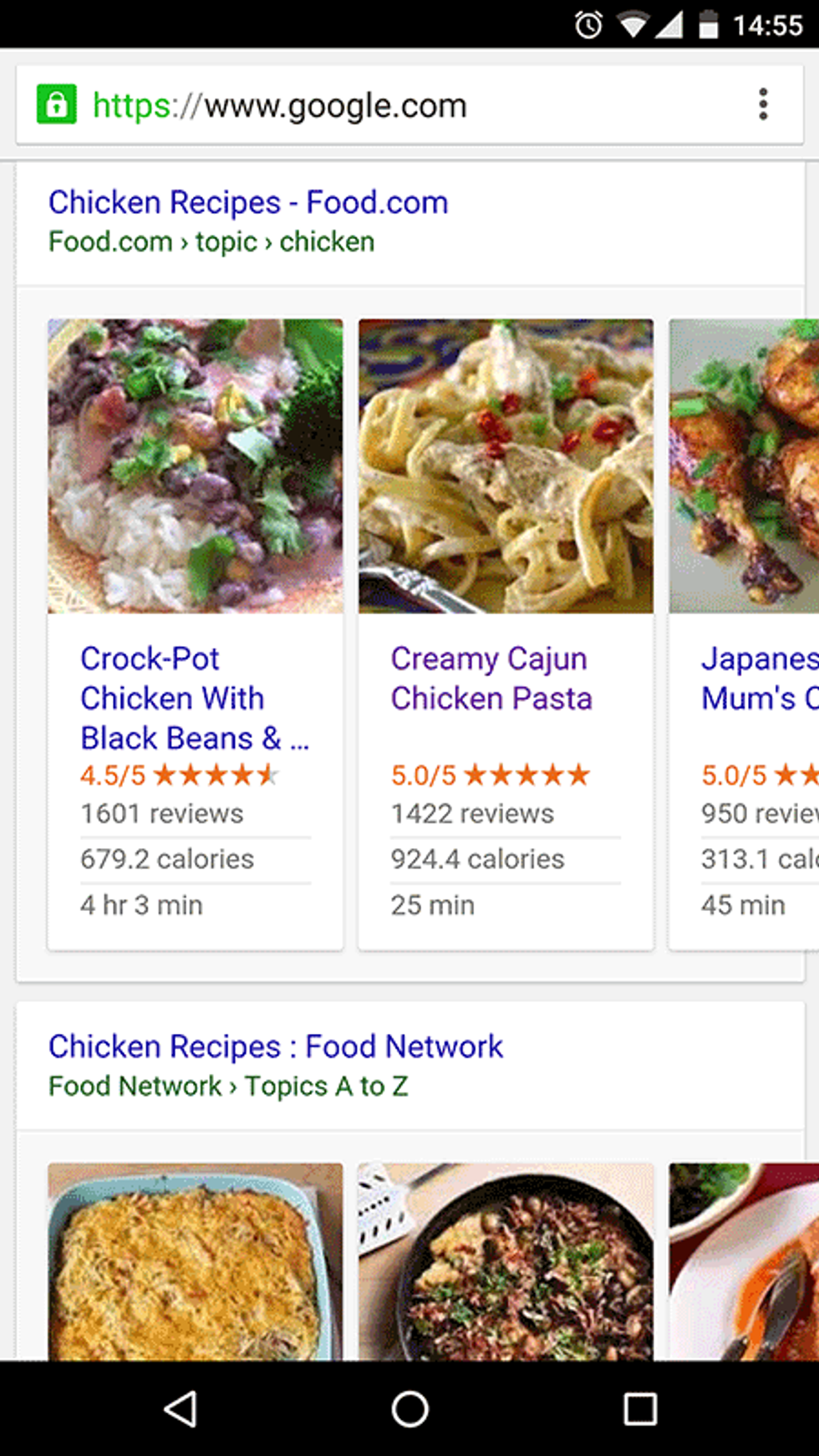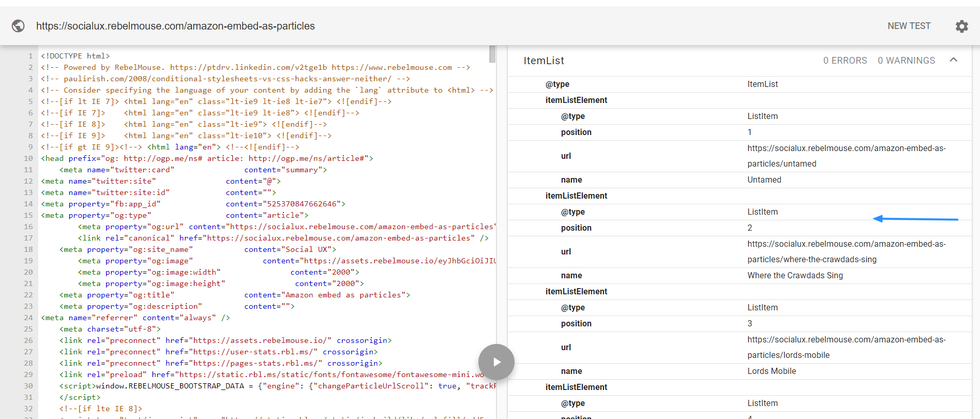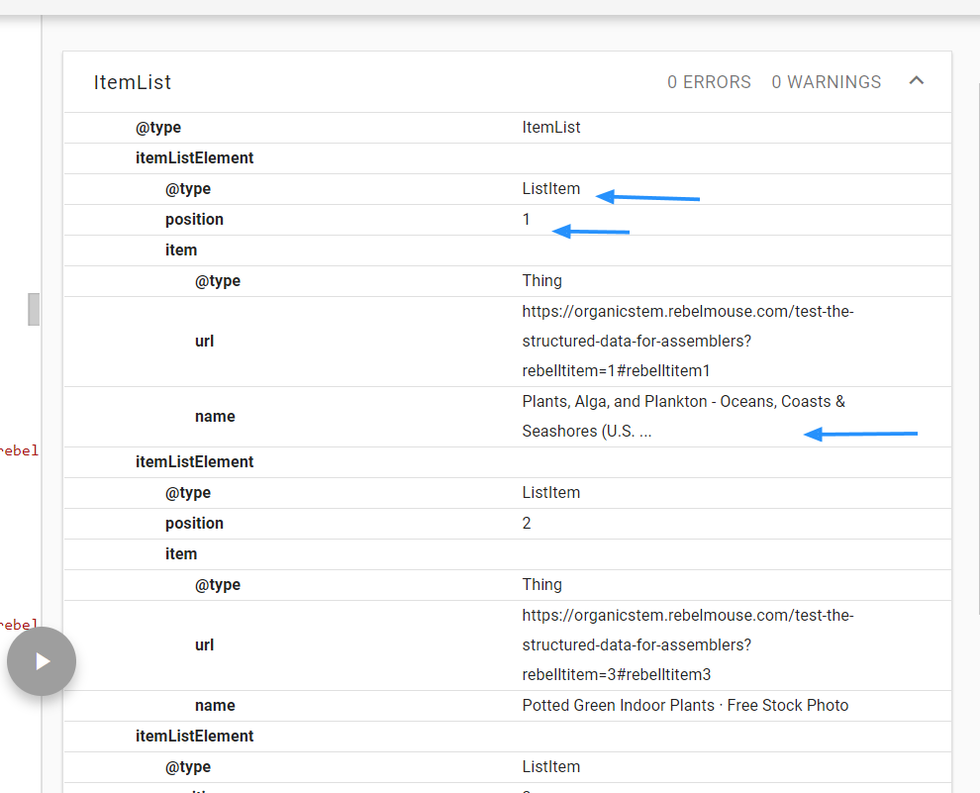
Use structured data to be featured in Google's rich results
Structured data provides the language Google's crawler needs to understand your content fully. These rich results can help you land a spot in a Google carousel:

On RebelMouse, using structured data on Particle Assembler items means they are eligible for a spot in Google's carousels. Click here for more information.
In Google's Structured Data Testing Tool , Assembler content is automatically marked using the ItemList @type :

Each particle will be a ListItem . Your particle's headline will become the Item.Name . This is the text that's displayed in the gallery. HTML formatting is ignored. This property is required for all-in-one-page lists. Do not include summary pages.
Note: Only particles with a headline are valid particles for structured data and consideration in a Google carousel, but it's always a good idea to include an image if possible. Also, every Assembler should have more than two particles that meet the aforementioned criteria.
The Item.Position is your particle's position in the carousel.
The Item.URL is your particle's slug. This is the fully qualified URL, and is an anchor to the exact particle within your Assembler. This property is required for all-in-one-page lists. Do not include summary pages. The URL must be the current page, and you must include an HTML anchor (<a> tag, name, or id value) in your page near the user-visible text. Here's an example: https://example.org/recipes/pies#apple_pie .
Here's how it looks in the tool:

If you have any questions about this feature, email support@rebelmouse.com or contact your account manager today.
Related Articles















































































